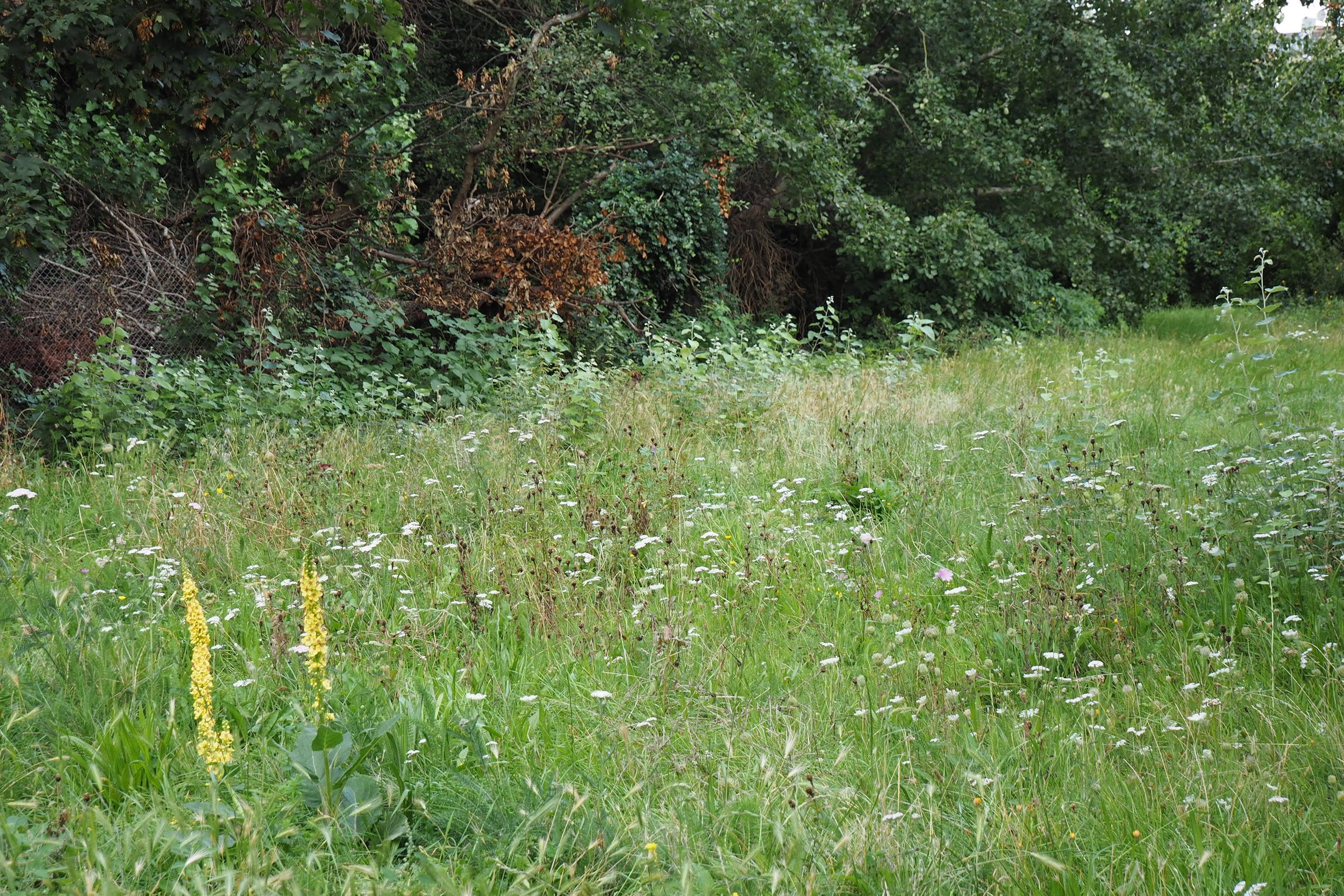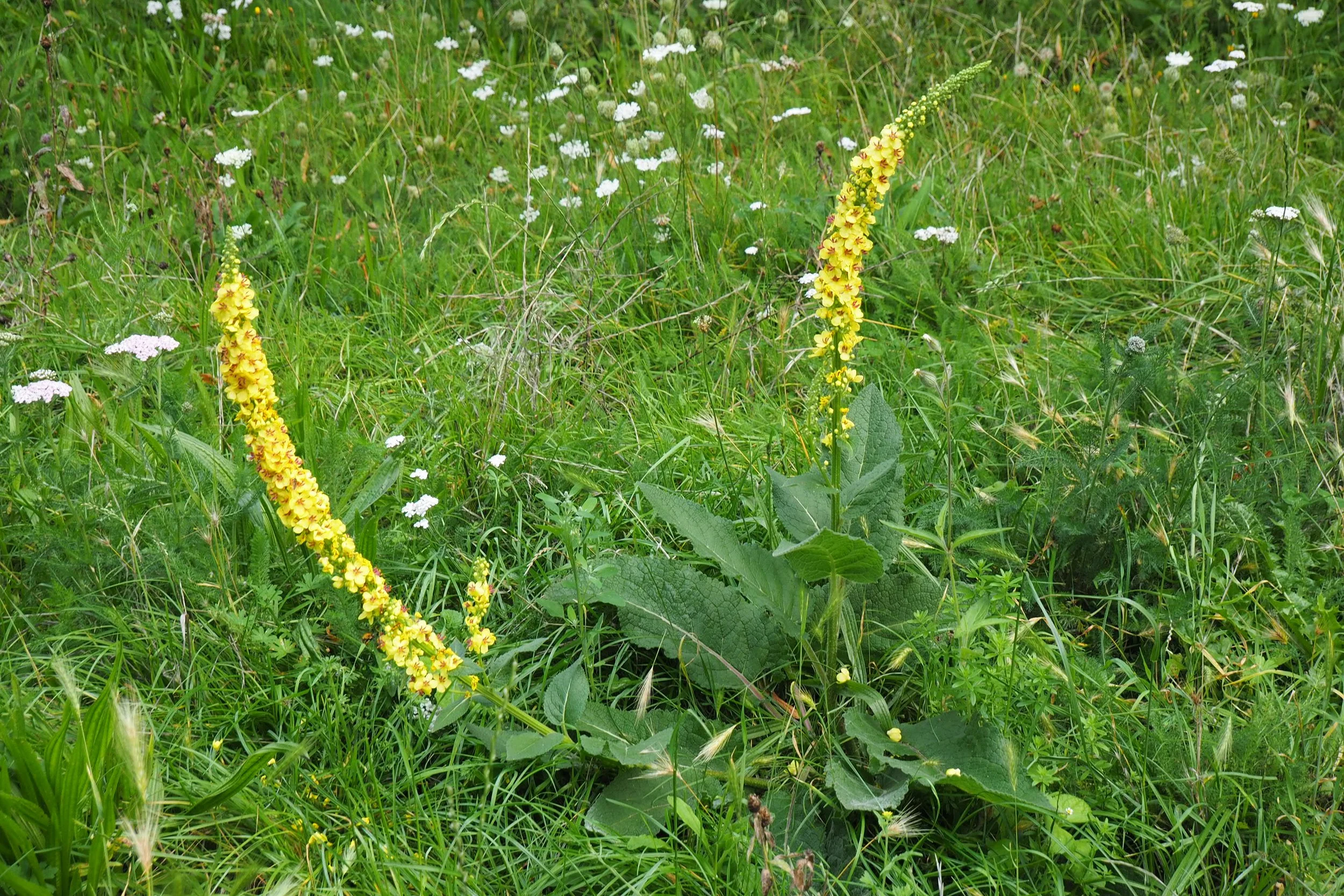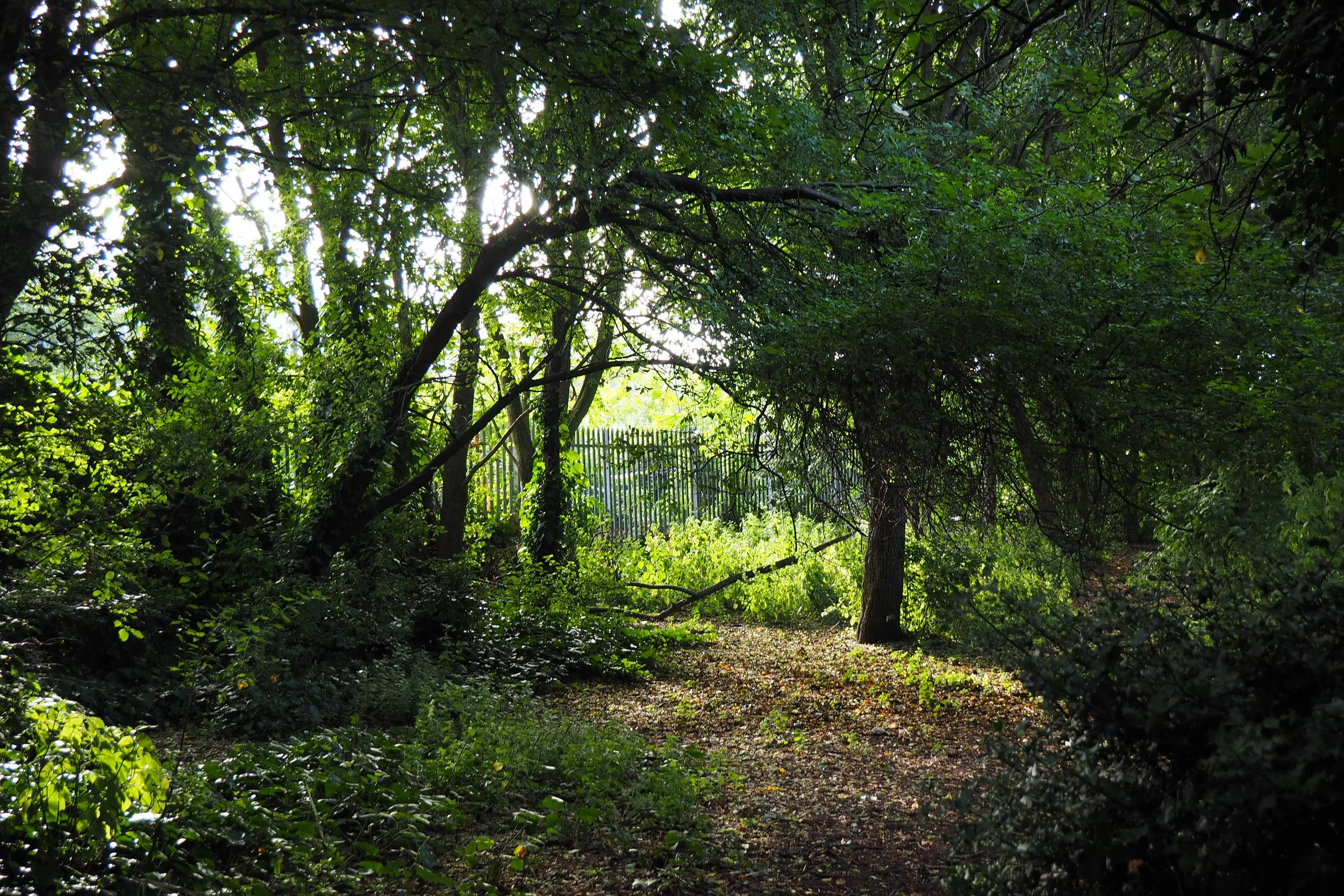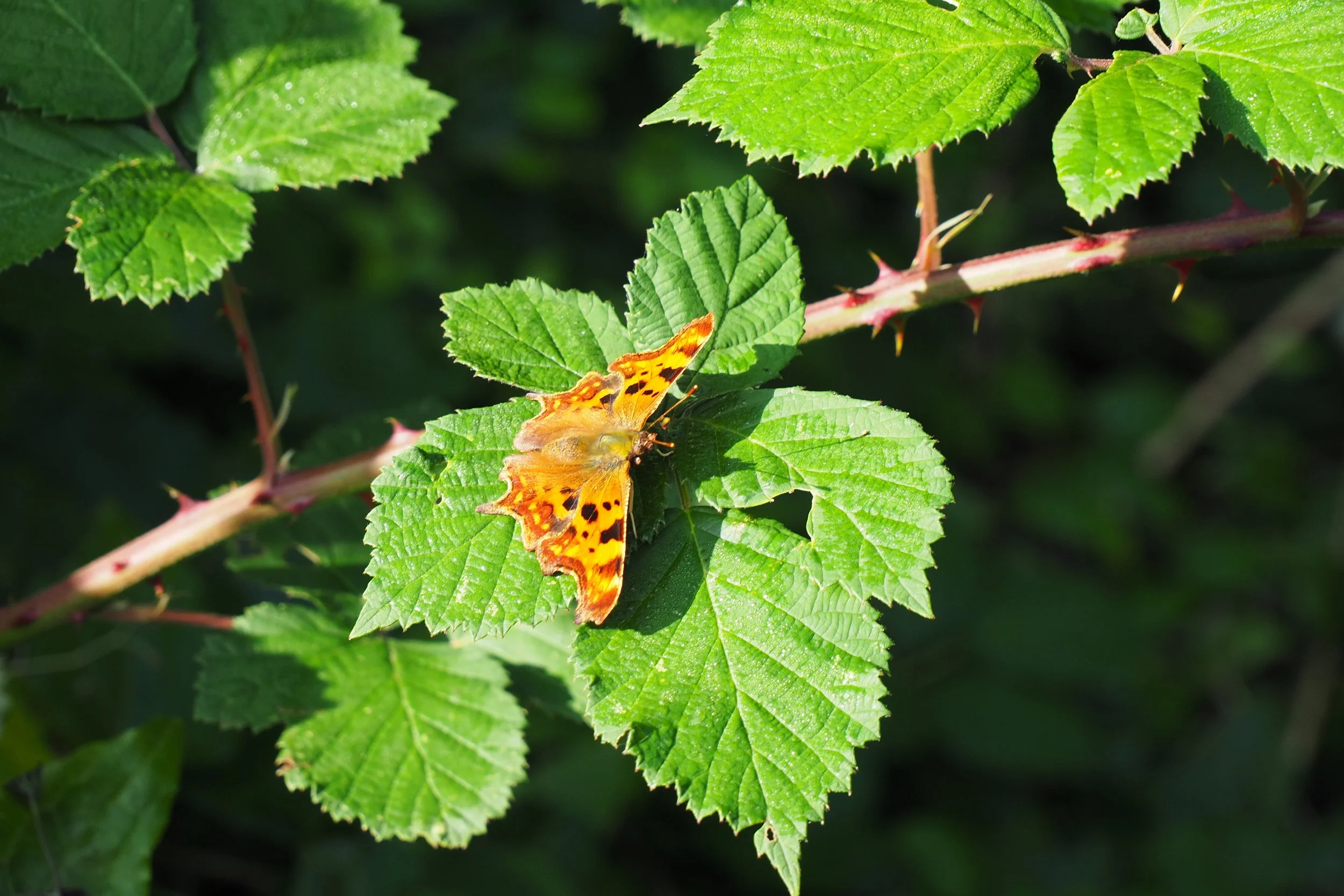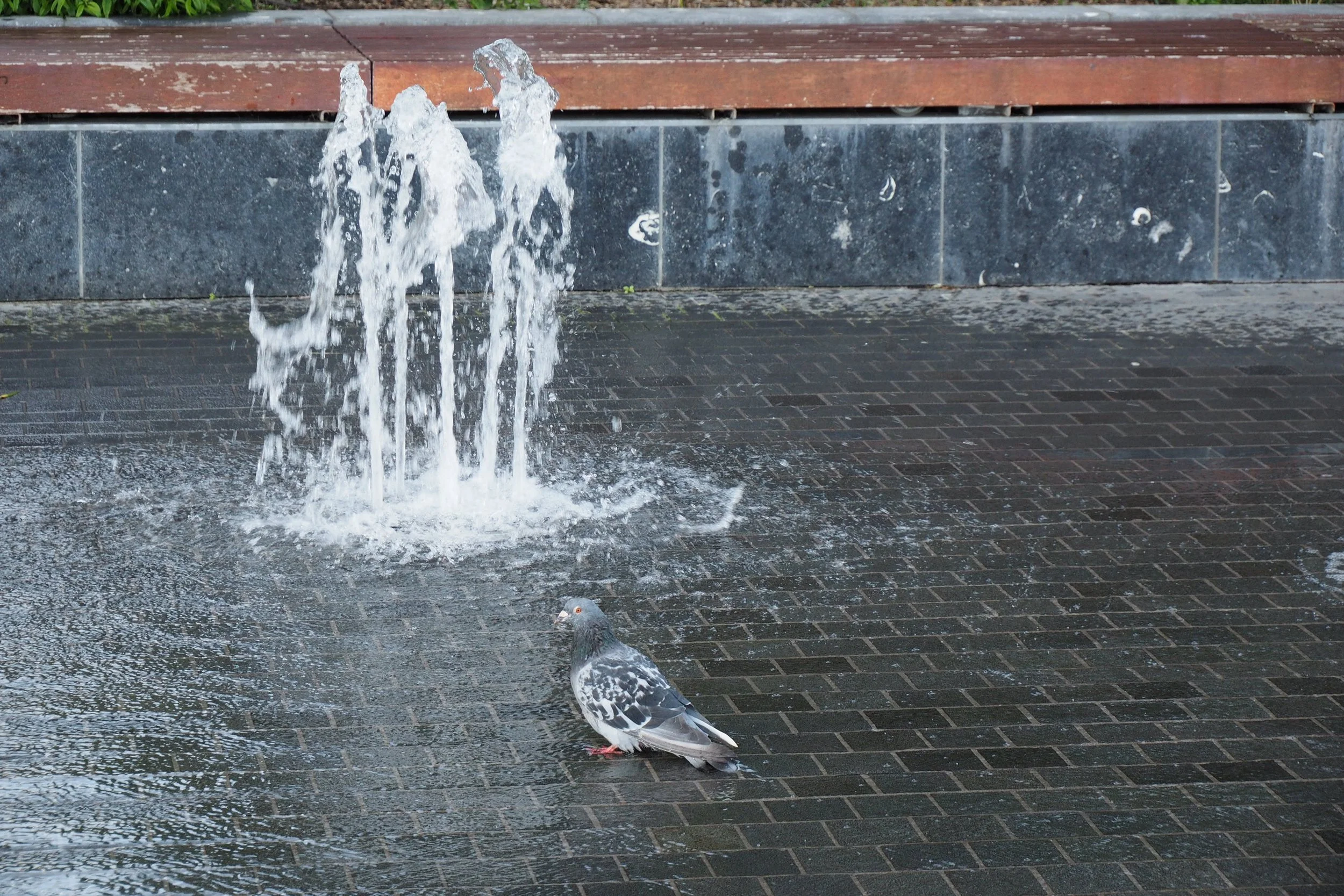Our Open Spaces in August
By Clare Graham, Chair, Open Spaces Committee
Late summer brings new wildflowers, a first three-day concert event for Battersea Park—and time to read up on the benefits of greenspace and biodiversity.
June wildflower survey update
The June survey area on 17 August.
My last blog described the wildflower survey we carried out in early June at the north end of Falcon Park with Enable Biodiversity. Two months later, after lots more rain and not too much heat, the area is still looking good—but also, and pleasingly, rather different. The yarrow (achillea millefolium) identified from its low clumps of feathery green leaves back in June, has now shot up everywhere, its tall flat white flower heads dominating the fresh display of wildflowers. There is also a striking new arrival, one which brings our recorded list of 29 species up to 30: a mullein (verbascum) has grown up near the path, its spikes of dark-centred yellow flowers rising up even above the yarrow. While there are several quite similar-looking species of mullein around, Enable have confirmed for me that this one is most likely dark mullein (verbascum nigrum): here's a more detailed shot.
The mullein.
Summer in Battersea
Falcon Park, early morning.
Provided the weather's not too hot, it's always a pleasure to stay put here in Battersea for August I find. On early morning walks with the dog, we encounter fewer humans, and more wildlife—hence the shots of the butterfly and the pigeon below, both taken first thing last Sunday. Later in the day it's also good to see more people out in our local open spaces though, making the most of their summer holidays in the fresh air and sunshine. And a new pleasure this year will be checking out Battersea Park in Concert, a rather ambitious first for Wandsworth Council and Enable. An event enclosure is currently going up on the South Lawn to accommodate its three 'picnic concerts', to be held on the Saturday, Sunday and Monday of the late August Bank Holiday weekend. I'm excited to have tickets for Sunday's Prom in the Park, complete with a firework finale—and am keeping my fingers crossed for a fine evening.
Time to read
A Comma butterfly on a bramble in Battersea Park.
Sometimes as Chair of Open Spaces I need solid facts and figures to back up my arguments about why greenspace in particular, or even biodiversity in general, matters so much. These can actually be quite hard to source, especially if like me you are not a scientist—it's easy enough to find oodles of polemic/ journalism/ warm and fuzzy stuff (like my blogs!), but rather harder to locate impartial, authoritative, well-researched material that is readily accessible. I was therefore delighted to discover recently, more or less by accident while browsing its website, that the Natural History Museum has made some excellent, clearly presented and highly relevant guides freely available within the Discovery: Anthropocene section. Do take a look for yourself; as a starting point here are three about what biodiversity is and why its loss matters, why cities need green spaces, and why everyone deserves to live within 15 minutes walk of nature.
And, for anyone who'd like yet more summer eco-reading, why not check out Enable: Biodiversity? Inevitably this is a less ambitious site than the NHM's; currently less well-organised too, though Enable tells me that it's working on that. But scroll down and you will find plenty of good locally relevant information, including advice on how to help out biodiversity at home and links to other resources such as Greenspace Information for Greater London.
A London pigeon bathes in a fountain opposite Nine Elms Pier.

